Where there are ducks there may also be duckweed
A few posts back you saw ducks gliding on a pond at the Brazoria National Wildlife Refuge on October 6th. Near those ducks I photographed several abstractions created by the duckweed, Lemna minor, that covered portions of the pond. I don’t know the identity of the other tiny plants that were mixed in.
At this scale you’ll have trouble discerning all the tiny things in the images.
Click the thumbnail below to see an enlarged excerpt from the first picture:
Here’s a more expansive view showing the interface between duckweed and bulrushes:
© 2019 Steven Schwartzman




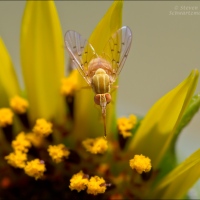
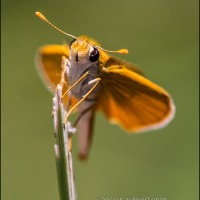
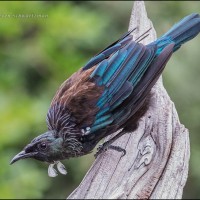
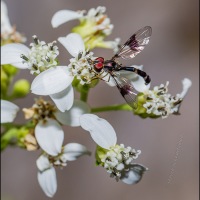
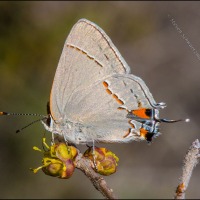
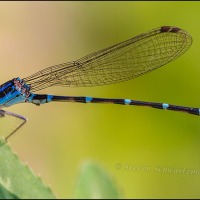
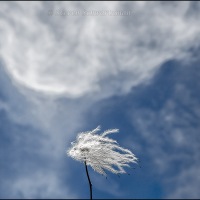
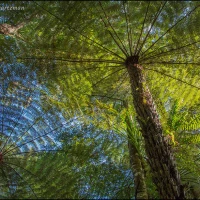

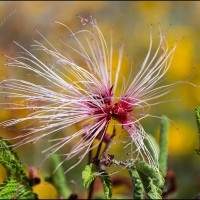
I love duck weed! I think it is cute when you can see it from the side view (as in an aquarium) and it reflects itself below. Are the orange bits part of the duckweed or something else entirely?
Lynda
November 3, 2019 at 10:03 PM
Greetings, you lover of duckweed. I assume the orange bits are something else, but what do I know? It’s normal for me to have more questions than answers—and not just about nature.
Steve Schwartzman
November 4, 2019 at 5:35 AM
The next commenter also brought up the orange (or brown) bits, so I did a little digging and am now wondering if they are Mexican mosquito fern: https://tinyurl.com/y3gsrqb6.
Steve Schwartzman
November 4, 2019 at 6:01 AM
Close. They’re Carolina mosquito fern (Azolla caroliniana). Peggy Romfh has a photo from the same spot on the Lady Bird site, and I’ve got a couple of photos here. I’ve seen it at Armand Bayou, too; that’s where someone first gave me the ID for it. I thought it all was duckweed, but some had turned color.
shoreacres
November 4, 2019 at 8:23 PM
Thanks. While researching the Mexican mosquito fern I learned about the existence of the Carolina species as well but didn’t know how to confirm which one I’d seen. I seem to remember reading somewhere that telling them apart requires microscopic examination, given how tiny the plants are.
Steve Schwartzman
November 4, 2019 at 8:40 PM
I certainly wouldn’t have known without input from people who work with the plants. Apparently there’s been a name change, too, but since the Wildflower Center still is using A. caroliniana, that’s good enough for me.
shoreacres
November 4, 2019 at 8:47 PM
Here’s a brief article that explains the name change: https://en.wikipedia.org/wiki/Azolla_cristata.
Steve Schwartzman
November 4, 2019 at 9:03 PM
😀
Lynda
November 6, 2019 at 3:02 PM
I knew a guy who grew POUNDS of the stuff just so he could compost it for his garden. He claimed it was the best and richest compost you could have. I wouldn’t know about that, but viewed as a child from the side of Mom’s aquarium I always imagined that the reflections of the leaves made them look like they were quacking. Silly yes? 😀
Lynda
November 6, 2019 at 3:06 PM
Hm, I don’t know how this happened but my last two responses are not in sequence. Well, no matter, I know you will get the connection.
Lynda
November 6, 2019 at 3:09 PM
In the way WordPress structures comments and replies, it’s sometimes hard to tell which comment someone is replying to.
Steve Schwartzman
November 6, 2019 at 3:49 PM
Ah, the things we thought when we were children. “Out of the mouths of babes,” right?
Steve Schwartzman
November 6, 2019 at 3:48 PM
Those ruddy colored plants look very interesting as well. Duckweed is cool. I’ve always wanted to get a shot of it with a nice frog peering out. There are a lot of images like that on the web, none of them by me though.
Steve Gingold
November 4, 2019 at 2:05 AM
Then it’s high time for you to make your frog-surrounded-by-duckweed portrait.
I wonder if the ruddy plants are Azolla mexicana: https://tinyurl.com/y3gsrqb6.
Steve Schwartzman
November 4, 2019 at 5:55 AM
That species has apparently been changed to Azolla microphylla, which is marked for a couple of counties in Massachusetts: http://bonap.net/Napa/TaxonMaps/Genus/County/Azolla.
Steve Schwartzman
November 4, 2019 at 6:03 AM
I’ll have to keep my eyes open for that along with frogs in duckweed.
Steve Gingold
November 4, 2019 at 7:47 AM
Looks like it might be.
Steve Gingold
November 4, 2019 at 7:45 AM
I really enjoy the way the duckweed reveals the currents in the water. When the pollen is especially heavy here, the same thing happens; it coats the water, but always is rearranging itself with the currents. The first photo looks remarkably like lichens on rock: both the colors and the coverage remind me of boulders I’ve seen in places like the Willow City loop.
shoreacres
November 4, 2019 at 8:28 PM
That’s an excellent observation about the duckweed and other tiny plants resembling multicolored lichens on rock. It occurs to me that lichens and duckweed live in mutually exclusive places: lichens can’t survive in permanent water and duckweed can’t survive outside of water. Tangentially this reminds me that in English the ng sound only occurs at the end of a syllable, while the h sound only occurs at the beginning of a syllable. (In hurrah the second h isn’t pronounced and therefore doesn’t contradict the mutually exclusive distribution of the two sounds.)
Steve Schwartzman
November 4, 2019 at 8:56 PM
I wondered whether there might be azolla there too … I see that shoreacres thinks there might be. Our pond gets covered with it …
Julie@frogpondfarm
November 9, 2019 at 8:41 PM
Yes, it’s there. I wasn’t sure of which species it is, but it’s there.
Steve Schwartzman
November 9, 2019 at 9:10 PM
You know, it is funny when a little terrier tries to run out onto duckweed thinking it is a meadow.
tonytomeo
November 14, 2019 at 12:06 AM
I didn’t know that dogs could be fooled in that way. I guess I shouldn’t be surprised, given that people as well as animals sometimes misperceive things. I’m reminded now of the visual cliff illusion:
https://sites.google.com/site/jlarounis/tommyproject?tmpl=%2Fsystem%2Fapp%2Ftemplates%2Fprint%2F&showPrintDialog=1
Steve Schwartzman
November 14, 2019 at 12:21 AM
The duckweed was so thorough that it really did look solid. It startled him when it wasn’t. He emerged looking like a Chia Pet.
tonytomeo
November 16, 2019 at 12:13 PM